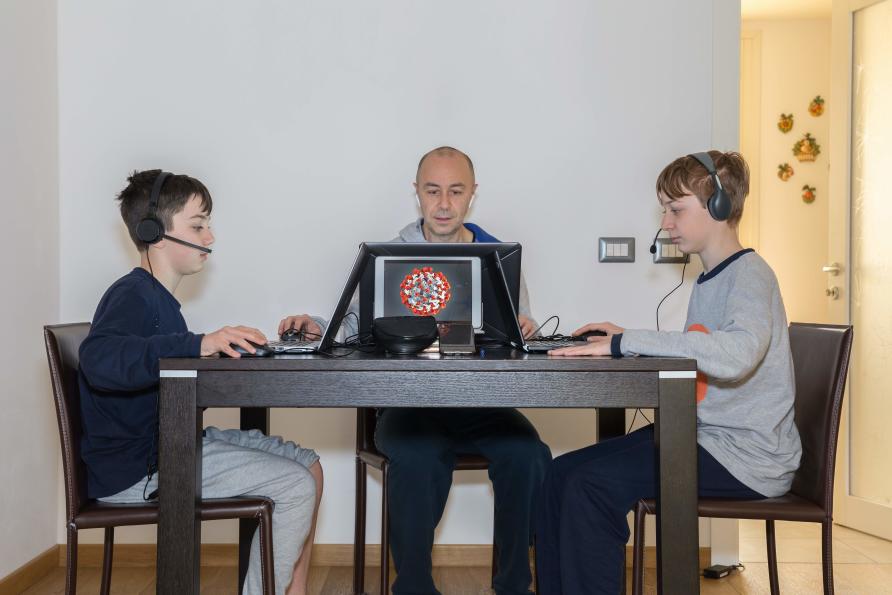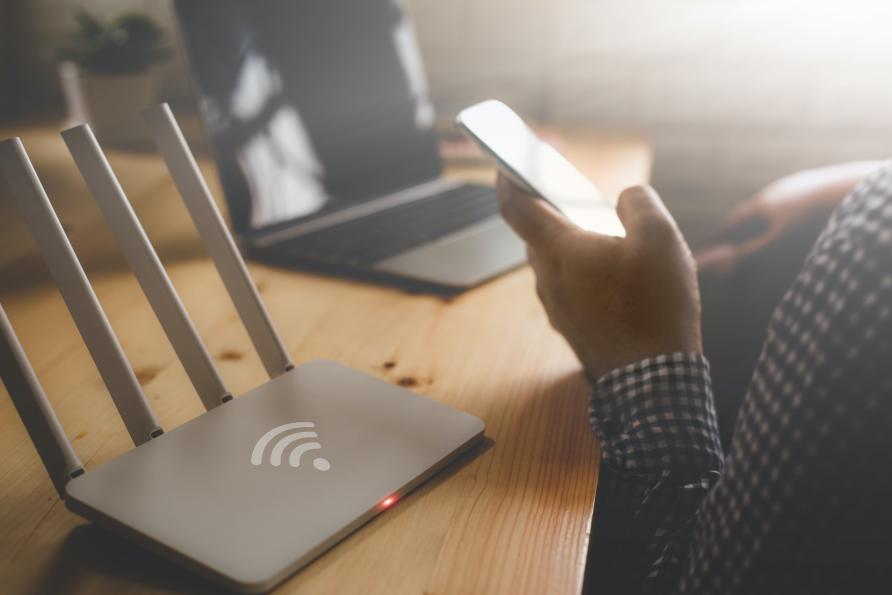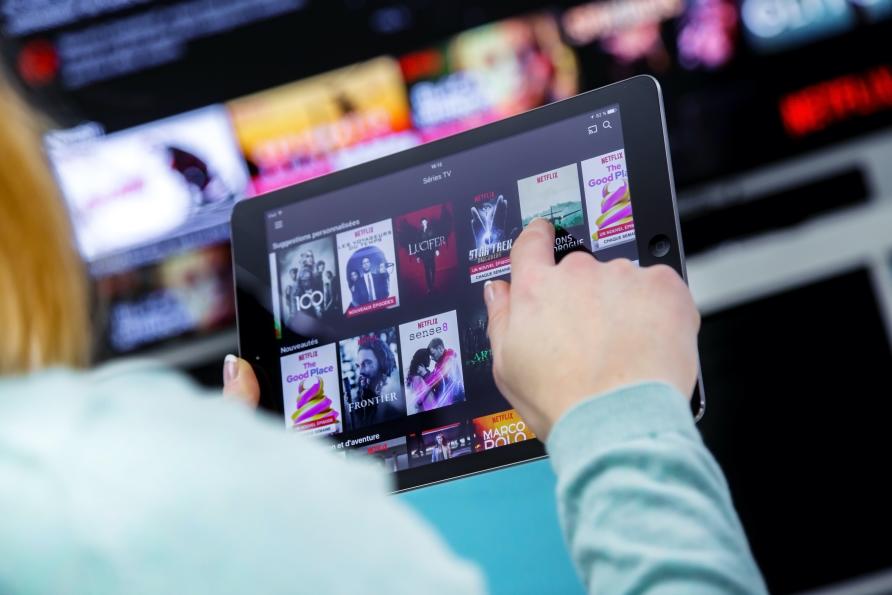The internet v COVID-19

It has become an enabler for us to maintain a connection to the outside world.

Everyone in the household can be vying for the same access to the internet.
Without the internet, we can’t work from home or access our doctors online, we would be devoid of the arts and the entertainment we habitually now source online, and we may even struggle to keep active under the watchful eyes of our personal trainers, albeit virtually.
When more than the half the world’s population – almost 59 per cent have access to some form internet connectivity – is expected to rely on the internet during these unprecedented times, can it meet our expectations?
Understanding the internet
The internet itself spans a number of separate network domains, or islands of connectivity, as it completes the end-to-end connection to our packets of information. These packets are short bursts of information about the destination and source of the information.
Unsurprisingly, every island of connectivity in the path of our internet packets impacts the way our internet experience is shaped.
Starting in our home, many of us use either a WiFi network for our portable devices and/or direct cable connections for desktop (our home network) to access a router, which then connects us to our broadband service.
Each one of us may access different types of broadband – and there are many including hybrid fibre coaxial cable (HFC) or simply cable broadband, fibre-to-the-premise or -home (FTTP/FTTH), fixed wireless, mobile broadband, or a satellite-based broadband network.
Depending on that you have, one of these interconnects with the internet router with the ISP (the Internet Service provider or ‘access network’).

The internet spans a number of separate network domains or islands of connectivity.
The ISP has its own backbone network. This helps to interconnect the different parts of the access network with their network gateways, to the core network.
Alternatively, it can use other network providers to pull together all the traffic from the many hundreds of users and then carry that large volume of traffic via the core network (the network interconnecting cities and regions) to an internet point of presence – a gateway to the global internet.
At this point, your traffic is handed over to the global internet which is another complex web of often privately-owned and operated fibre optic networks using over-the-land or undersea cable networks.
Once you reach that gateway, your internet packets will then travel over more islands of networks to get you connected to your workplace network or to a streaming service network, for example.
Much the same way our workplaces have their own network and systems supporting our work, our entertainment services like Netflix, Foxtel, Amazon and others have their own complex networks moving their content around the world.
So, our online experience can be impacted by any one of these islands of networks.
On top of this, when you are streaming your favourite series, your connection from the provider to your home (‘downlink’) becomes the important connection.

Your connection to your uplink and the returning downlink can both impact your experience.
But, if you are working from home, it’s more complicated. Your connection to your work’s network (‘uplink’) as well as the return path (‘downlink’) can both impact your experience.
Closer to home
There are other considerations as well, just to make things more complex, to do with your set-up at home.
If you’re using a WiFi network at home to connect multiple devices, your experience may be impacted by the exact location of the router, as well as how well it’s configured to manage those wireless channels – noise and interference from other WiFi networks can affect its performance.
The hybrid fibre coaxial cable (HFC) broadband uses a shared cable to connect many hundreds of homes to the ISP network, so the number of homes on that link as well as their patterns of use can also have an impact.
Meanwhile, the fibre network gives each user a high bandwidth fibre connectivity to the nearest central office and usually offers better connectivity. People with fixed wireless and mobile broadband also share the capacity of specified radio base-stations.
If we look at satellite connectivity, it uses limited bandwidth to provide services, but its performance is more easily affected by events like bad weather and also relies on shared access to the satellite capacity.
Each of these options is in the broadband technology mix, but the number of people sharing the bandwidth of the backbone now becomes critical.

Your home set-up can impact on how your internet performs.
All of the broadband service connections assume a specific level of use by people in different areas and, accordingly, only provide a certain amount of backbone capacity.
For example, a fibre network may share its one gigabit per second bandwidth among 16 or 32 users. So, if every user tries to access it at the same time, it becomes impossible for any single person to access its theoretical bandwidth of one gigabit per second.
But, if we look at an HFC broadband, your connection may be sharing a backbone with hundreds to thousands of users depending on the network provider’s technology, so the level of sharing is even greater.
For all parts of the internet, downlinks may experience similar patterns – coinciding with a popular event like the World Cup or Eurovision.
However, uplink will likely be different for different users.
As those of us who can work from home now do so, the network design choices your broadband network provider and the ISP have made will impact your experience. This is because our networks aren’t designed for a ‘similar usage pattern among users’.
Instead, they have been designed to exploit the difference in our usage patterns to provide the service with much, much lower capacity in the backbone than required otherwise.

Most entertainment platforms are upgrading their service delivery networks – and downgrading their bitrates – to cope with increased demand.
This approach – which provisions capacity by assuming a lower bandwidth requirement when looking at all the different streams of traffic and then exploits different patterns in the expected demand (known as statistical multiplexing) – is used across every parts of the internet.
Pandemic pressure
If we take an average Australian household of two adults working remotely with two children accessing online education, this home now has very similar internet needs to a home with four adults all working remotely.
Compared to their pre-COVID patterns, now everyone in the household is vying for the same access to the internet. This creates not only symmetrical traffic in both up and down links, but also generates substantial traffic as a result of things like video conferencing or interactive education tools.
The household’s habits and routines might also become very similar, with adults and kids working roughly the same hours, accessing entertainment and training along with video calls or conferencing.
This creates an unusual load on our network across different islands of connectivity.
Depending on our usage patterns, many of us may need to upgrade our broadband service plans to ensure that our data plans are sufficient and the speed of connectivity can keep up with our ‘new modes’ of use.

Adults and children may end up accessing the internet at similar times, increasing the load on the family network.
Extra capacity
There’s been growing recognition of the need for backbone capacity among the network operators and service providers.
Some Australian operators are moving to provide extra capacity to allow service providers to cope with rapidly changing load and usage patterns. A few of Australia’s biggest providers, like Optus and Telstra, have announced plans to provide extra data for their mobile broadband plans as part of their coronavirus response.
News reports indicate that the NBN is currently coping with the load and it has provided additional capacity to cope with the demand, but we’ll have to wait to get an accurate picture of people’s experience.
As many of us work from home, our workplace’s information technology and service provision teams are also adapting as traffic now flows in and out of their network, and less within their local area network, that typically interconnects offices.
Likewise, most entertainment platforms are upgrading their service delivery networks as well as strategically placing more popular content closer to the changing user base.
While larger companies are well-equipped to respond to the need to upgrade its internet and network capacity, it could be a painful transition for many medium to small-sized organisations.

Our new demands may require a reset in our own habits and work patterns so the internet can keep up.
With many parts of the world facing a slowing economy, this kind of agile upscaling of network infrastructure is difficult and could also be impeded by the unavailability of the right equipment for upgrades.
Given the level of investment in building the global network behind the internet over past few decades, we are now benefiting from this excess capacity as well as the ability of the network operators to route large volumes of traffic dynamically.
But as we look down the barrel of self-isolation for many more weeks to come, our reliance on the internet and our new demands may require a reset in our own habits and work patterns so the internet can keep up.
Meanwhile, once your working-from-home day is done, sit back with your family or housemates, and enjoy the Tiger King or play FIFA online – even if it glitches every now and then.
This article was written by Professor Thas A. Nirmalathas and Professor Elaine Wong of the University of Melbourne. It was published by Pursuit.
Elaine Wong is an Associate Dean and Professor with the Melbourne School of Engineering. Her research interests include low-latency communication networks and prescriptive analytics to facilitate human-to-machine applications over the Tactile Internet.












